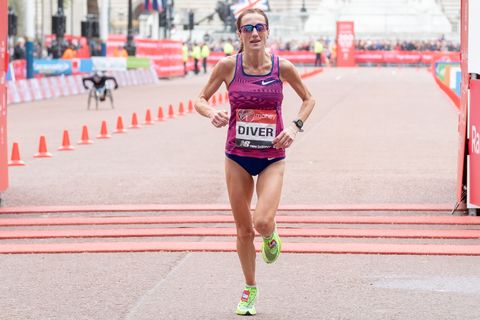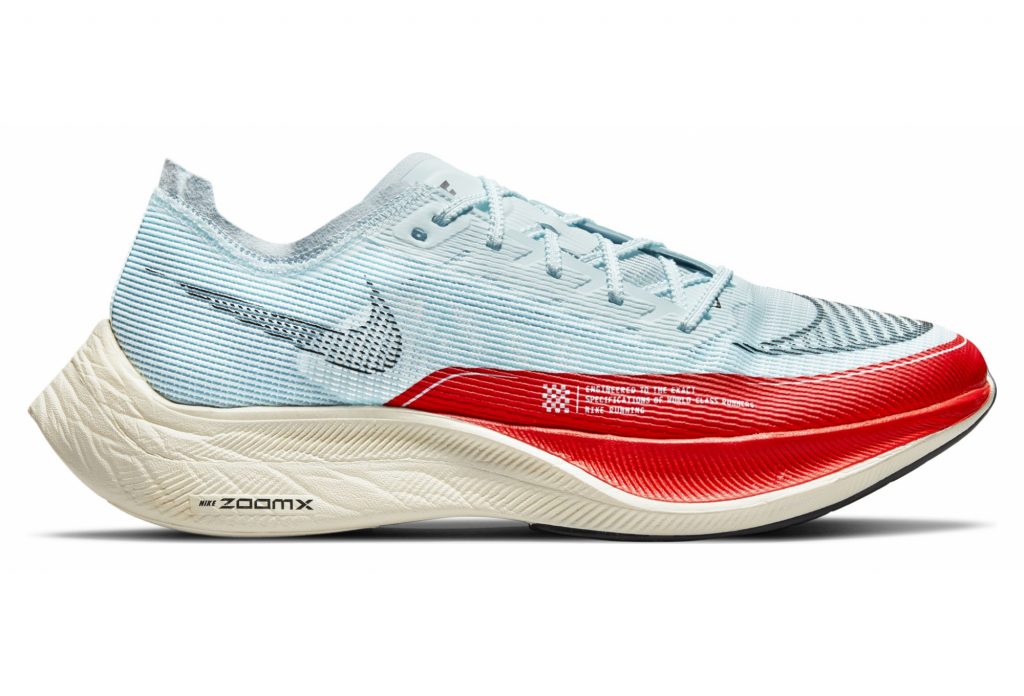The secret to achieving a running personal best
Find out how Australian Nike athlete Sinead Diver breaks records on the race track

One of my favourite things about running is the feeling I get when I achieve a new personal best. Running your fastest marathon or even kilometre proves that the hard work you’ve put in is paying off, and resets your expectations of what you can physically and mentally achieve.
Australian Nike athlete Sinead Diver is used to breaking records. With a race time of 2:24:11, Diver smashed her personal best by over a minute at the 2019 London Marathon, placing seventh and qualifying her for the upcoming 20201 Tokyo Olympics. Her incredible performance cements Diver, 42, as Australia’s third fastest marathon runner in history – an astounding feat given she took up competitive running only 11 years ago.
Goal setting
It started with a goal. Goals are your roadmap to success and they should be meaningful and specific. Your goal must be motivating and push you to achieve your best. And it shouldn’t be ambiguous – you need to be clear on what you want to do and how to go about it.
Diver’s goals for the London Marathon were exactly this.
“I never had any aspirations of winning. This was one of the strongest fields ever assembled at a marathon major so I knew a top 10 performance would be an exceptional result,” she explains.
“My main goal was to get the qualifying time for Tokyo and the secondary goal was to get a PB. I achieved these so all in all it was a good day.”
Steady as she goes
It may seem obvious, but pacing yourself in training and on race day is crucial to warding off late-race fatigue. Pacing is both an art and a science, and is something that runners sometimes get wrong. The longer you plan to run, the more important it is to know your pace, as well as our how adjust it so you don’t fall short of your goal.
Everyone paces differently, and Diver describes her approach to running marathons as steady.
“I like to run an even paced, steady race as much as possible. 42.2km is a long way to go and inevitably there are going to be some slower and some faster kilometres, but in general I like to keep my effort consistent,” she says.
Put your best foot forward
Wearing the right shoes is a must.
Diver says she’s always been fussy about her footwear, both in training and racing.
“I look for different qualities in shoes depending on the session. For speed work, I like to have a lighter shoe that feels quite minimal and then for thresholds I like to wear a shoe with a bit more cushioning. I’m loving Nike Pegasus Turbos for these sessions, a Nike Zoom Fly for long runs and now the Nike ZoomX Vaporfly Next% for races. I don’t train in my race shoes as I like to keep them fresh and get that “race ready” feeling when I put them on.”

Many runners say you shouldn’t do anything new on race day, but Diver threw caution to the wind at the London Marathon when she raced in the Nike Next% for the first time.
“I wasn’t one of the lucky runners who got to try the Next% before race day,” says Diver. “I would normally never race in a pair of runners I hadn’t tried in training, but I immediately loved the feel of the Next%. They felt like the original Nike 4% so I decided to take the risk and wear them for the race, and it paid off.”
Secret sauce
Diver says it may sound like a cliché but her secret sauce to making continual performance gains is consistency in training.
“The longer you can train without getting injured, the more you improve,” says Diver.
“It takes a few years to get your body accustomed to the training required for a marathon. There’s no single training plan that works for everyone so figuring out what works for you is crucial.”
A champion’s schedule
Diver’s training week is structured the same all year round but the volume and intensity changes depending on the race she’s preparing for.
“I do quality work on Tuesday, thresholds on Thursday, hills on Saturday and a long run on Sunday. The days in between are just easy/recovery runs. I usually double on most days too, especially as the mileage increases in a marathon build up.
“Over the years, my mileage for each marathon has increased. For my first, I was doing between 80-120kms per week whereas for London it was closer to 160-180kms.
“London was my eighth marathon and I can say without hesitation that I’ve learnt something different in each one. There are a lot of factors that can impact the outcome, so experience over the distance is invaluable.”
